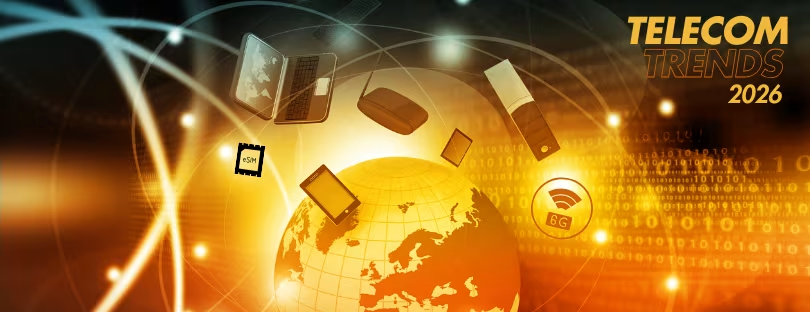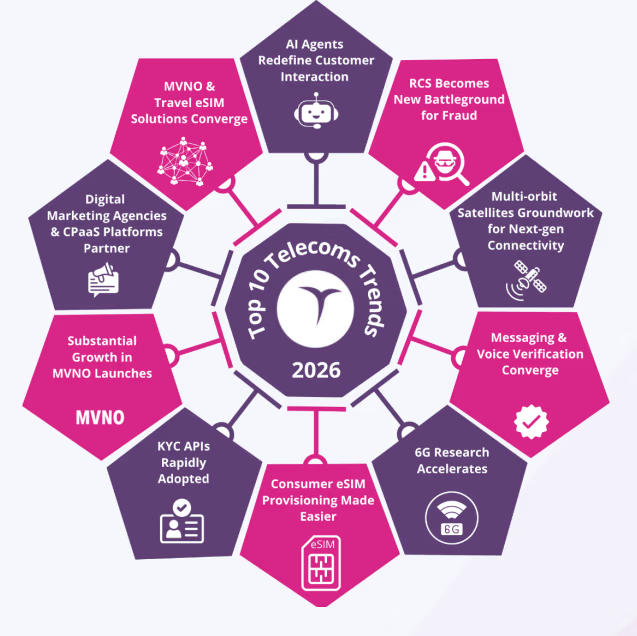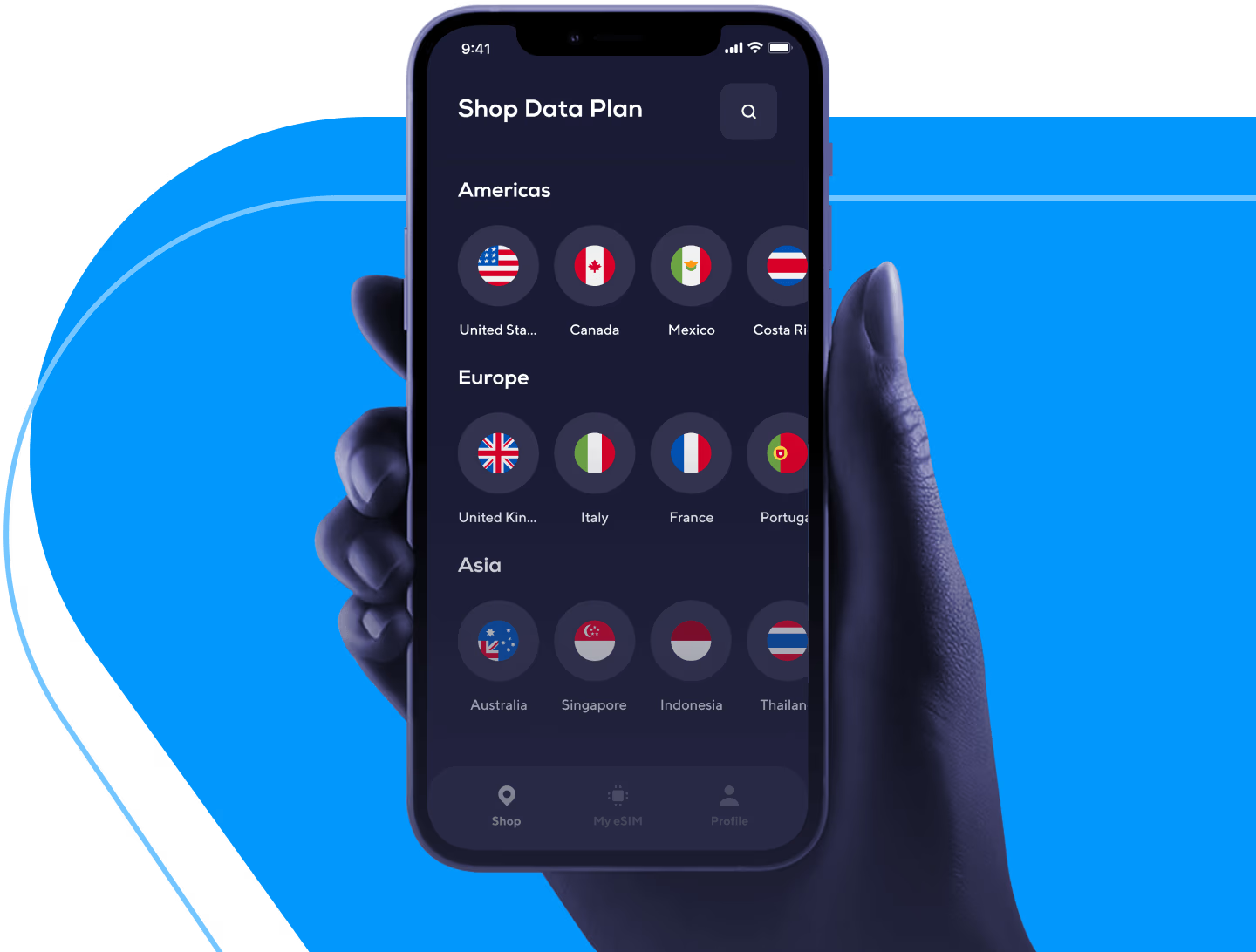
Top 10 Telecoms & Connectivity Trends 2026 by Juniper Research: eSIMs, AI & 6G Lead the Way
If 2025 was the year telecoms flirted with disruption, 2026 is when things get serious. Juniper Research’s latest Top 10 Telecoms & Connectivity Trends report reads like a roadmap to the next generation of global connectivity—where AI agents handle customer support, MVNOs go mainstream, and eSIMs finally deliver on their “borderless travel” promise.
Here’s a down-to-earth breakdown of what’s coming and why it matters—whether you’re a traveler, a tech lover, or just trying to keep your mobile bill from exploding.
 1. AI Agents Are About to Take Over Customer Support
1. AI Agents Are About to Take Over Customer Support
We’ve talked about AI for years, but 2026 is when it actually works for telecoms. Thanks to Anthropic’s Model Context Protocol and Google’s Agent2Agent system, AI agents can now talk to other systems—and even to each other—without needing endless custom integrations.
What does that mean? Imagine never waiting on hold again. AI agents embedded in customer platforms (CPaaS, CCaaS, CRMs) will handle everything from plan upgrades to troubleshooting, all within a single chat window.
And the business side? Expect pay-per-usage models, where companies only pay when the AI actually does something. It’s efficiency meets empathy—or at least a better version of it than the chatbots of old.
2. Travel eSIMs and MVNOs Are Merging Into a Global Roaming Powerhouse
This one’s huge for travelers and digital nomads. Travel eSIMs—those prepaid digital SIMs that save you from roaming nightmares—are evolving fast. But Juniper Research points out that MVNOs (mobile virtual network operators) still have one key advantage: recurring revenue.
The smart money? Combine the two. In 2026, MVNOs will start offering travel eSIMs as add-ons inside their existing apps. One login, one brand, and both local and international plans—topped up in seconds.
It’s the “Connectivity-as-a-Service” era, where your favorite digital brand or fintech app (think Revolut or Klarna) might also be your mobile provider. And yes, KYC checks will be built right in for smooth, secure signups.
3. Fraudsters Are Coming for RCS Messaging
As Rich Communication Services (RCS) goes mainstream, it’s turning into a new frontier—not just for marketers, but for scammers too. Picture AI-generated “pig butchering” scams or hidden QR codes inside RCS images.
Juniper predicts losses topping $480 million in 2026 alone. That’s why operators are racing to build smarter fraud detection systems using AI and behavioral analytics.
End-to-end encryption makes it tricky to detect bad actors, but the focus will shift to metadata—spotting unusual message patterns or suspicious accounts. The lesson: RCS may be rich and shiny, but it needs serious guardrails before it becomes the next SMS-style scam playground.
4. Digital Marketing Agencies + CPaaS = A New Kind of Partnership
Here’s where telecom meets advertising. As SMS costs rise and spam worsens, enterprises are shifting from plain messaging to richer, AI-powered, omnichannel campaigns.
CPaaS providers (like Twilio, Infobip, and Sinch) are realizing they can’t do it all alone—so they’re teaming up with digital marketing agencies. The idea? Let marketers handle creativity while CPaaS players power the infrastructure.
Expect to see these collaborations explode across North America and Europe first, where digital ad spend is set to hit a whopping $520 billion. The lines between telecom, tech, and marketing are officially blurring—and fast.
5. Multi-Orbit Satellites Are Building the Next Internet
Remember when “satellite internet” meant slow, expensive connections in remote areas? Not anymore. With nearly 12,000 satellites expected in orbit by 2025—and constellations from SpaceX, Amazon’s Kuiper, and China’s new entrants—the sky’s getting crowded for a reason.
The big leap for 2026? Multi-orbit integration. Instead of relying on just Low Earth Orbit (LEO), providers will combine satellites across different orbits for better resilience and coverage.
This means faster, more reliable connections for remote communities, travelers, and even airplanes—and a massive step toward seamless global connectivity.
6. Messaging and Voice Verification Are Finally Joining Forces
Scams and spoofing have made people wary of unknown calls and texts. That’s why telecoms are doubling down on enterprise verification—confirming that the person or business contacting you is legit.
Juniper says 2026 will see messaging and voice verification systems finally converge. Think of it as caller ID 2.0, powered by CPaaS and CCaaS platforms working together.
It’s not just about branding—it’s about restoring trust in digital communication. Expect to see more “verified business” calls and messages in your inbox soon.
7. MVNOs Are Popping Up Everywhere—Literally
The MVNO boom isn’t slowing down—it’s diversifying. Thanks to “Telecom-as-a-Service” (TaaS) and plug-and-play MVNO-in-a-Box solutions, any brand can now launch its own mobile network in weeks.
Fintechs like Revolut and Nubank have already jumped in. Next up? Sports clubs, charities, and retail chains are launching their own SIMs to build loyalty and new revenue streams.
What used to be a capital-intensive industry is becoming modular and accessible—like Shopify for mobile networks.
8. 6G Research Is Heating Up—But This Time, It’s About Efficiency
You might think we’re still getting used to 5G, but telecoms are already looking ahead. The key difference this time? Learning from past mistakes.
5G promised massive revenue potential that never quite arrived. With 6G, operators want flexibility, modularity, and monetization built in from day one. Expect more focus on the terahertz spectrum—not just for speed, but for smarter, more efficient use of network resources.
6G won’t just connect things faster—it’ll connect them smarter.
9. KYC APIs Are Becoming Telecom’s Next Big Revenue Stream
Telecom operators are finding gold in their data—and Know Your Customer (KYC) APIs are the next frontier. By opening network APIs (through initiatives like CAMARA), operators can help apps verify users’ identities securely in real time.
That’s a big deal for banking, gaming, and eCommerce—especially for age verification and fraud prevention. Juniper predicts KYC API revenue will more than double to $600 million in 2026, with mobile identity leading the charge.
In short, your phone number is becoming the new passport to digital trust.
10. eSIM Onboarding Finally Gets Easier
And now, the headline trend every traveler cares about: eSIMs are finally getting simpler. Apple’s eSIM-only iPhones have forced operators to catch up—pushing them to build better self-service onboarding and in-app activation systems.
In 2026, we’ll see operators and OEMs (like Samsung) invest heavily in consumer education. Expect more “one-tap” activation experiences and aggregator apps where you can compare and buy eSIMs from multiple providers.
But the transition won’t be instant. Markets like China and India still face regulatory barriers, and consumer awareness remains low. Still, the momentum is unstoppable—eSIMs are here to stay, and the industry is finally building the infrastructure to match.
Wrapping Up: A Year of Reinvention
If there’s one takeaway from Juniper’s 2026 forecast, it’s this: telecom isn’t just about connectivity anymore—it’s about intelligence.
AI, automation, and APIs are turning networks into platforms. MVNOs and eSIMs are making mobile service borderless. And satellite networks are expanding the very definition of “coverage.”
In short, 2026 will be the year the telecom industry stops talking about transformation—and actually delivers it.





 1. AI Agents Are About to Take Over Customer Support
1. AI Agents Are About to Take Over Customer Support






